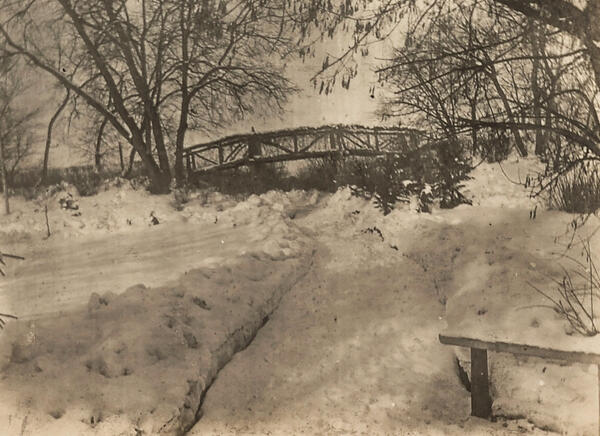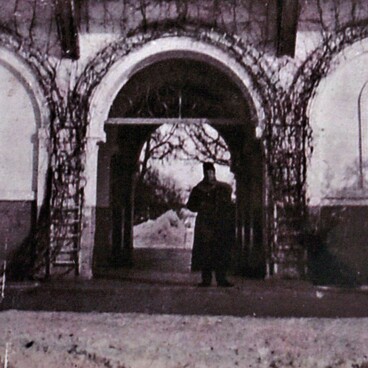The landscape park in Rakitnoye village is regarded as one of the largest human-made natural complexes in the Belgorod region. Prince Yusupov family’s representatives laid it out during the estate construction.
Landscape or English parks are featuring a trend in the garden art contrasting sharply with the French baroque park. The landscape parks are created in a free layout and use natural landscapes, having accentuated good points and disguising shortcomings while doing so. Rough terrain is successfully leveraged in such parks: hills, slopes, ravines, natural ponds, and even swamps.
The Yusupov Park is located one kilometer away, northwest of the Rakitnoye village center. It is located on a promontory-shaped semi-hill, the foot of which is covered by elongated ponds — weirs from the southwest, south, and southeast. The weirs are artificially created with the help of three dams on a small river flowing into the Rakita River. The cascaded ponds chain, created in this way, became the mainstreaming compositional element and the main decoration of the park. The park is very light, and the mirror-like surface of the ponds is visual from different points of the hill.
About 150 trees aged between 120 and 150, as well as several 300-year-old oaks, have survived in the park. The old trees grow along the park paths, primarily lindens, and maples, oaks, poplars, pears, and willows. They cover the hillsides along the banks of the ponds with a far-reaching net. The paths also run along with the pond dams, leading into the park from the access road, and limiting the park on the east side. Today, there is Rakityanskoy forestry in the northern part of the park, as well as several modern village houses with smallholdings. There are high earth walls along the northwestern border — a system of barriers and embankments, protecting the park from water floods and soil washing down.
The photographs of the early 20th century show how the park looked like during the Yusupov times. Valentina Nabok, a keeper of the Yusupov Palace collections on the Moika in St. Petersburg gave these photos to the museum. She found them while studying the Yusupovs’ photo album, purchased by Viktor Vekselberg at an auction in Paris in 2014.
Landscape or English parks are featuring a trend in the garden art contrasting sharply with the French baroque park. The landscape parks are created in a free layout and use natural landscapes, having accentuated good points and disguising shortcomings while doing so. Rough terrain is successfully leveraged in such parks: hills, slopes, ravines, natural ponds, and even swamps.
The Yusupov Park is located one kilometer away, northwest of the Rakitnoye village center. It is located on a promontory-shaped semi-hill, the foot of which is covered by elongated ponds — weirs from the southwest, south, and southeast. The weirs are artificially created with the help of three dams on a small river flowing into the Rakita River. The cascaded ponds chain, created in this way, became the mainstreaming compositional element and the main decoration of the park. The park is very light, and the mirror-like surface of the ponds is visual from different points of the hill.
About 150 trees aged between 120 and 150, as well as several 300-year-old oaks, have survived in the park. The old trees grow along the park paths, primarily lindens, and maples, oaks, poplars, pears, and willows. They cover the hillsides along the banks of the ponds with a far-reaching net. The paths also run along with the pond dams, leading into the park from the access road, and limiting the park on the east side. Today, there is Rakityanskoy forestry in the northern part of the park, as well as several modern village houses with smallholdings. There are high earth walls along the northwestern border — a system of barriers and embankments, protecting the park from water floods and soil washing down.
The photographs of the early 20th century show how the park looked like during the Yusupov times. Valentina Nabok, a keeper of the Yusupov Palace collections on the Moika in St. Petersburg gave these photos to the museum. She found them while studying the Yusupovs’ photo album, purchased by Viktor Vekselberg at an auction in Paris in 2014.

